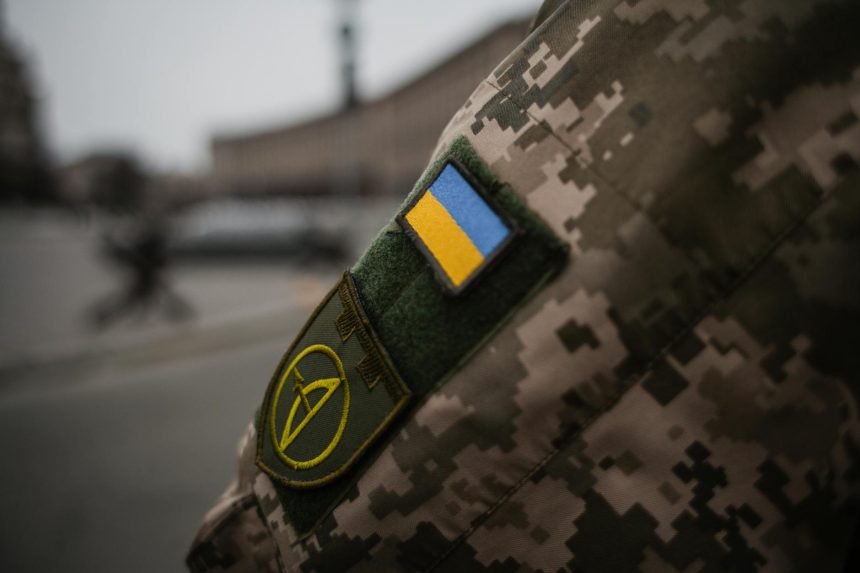Germany’s Ambitious Military Aid: What Ukraine’s $2 Billion Pledge Means
## Germany’s $2 Billion Military Aid Boost: A Turning Point for Ukraine?
Germany has announced a significant pledge of $2 billion in military aid for Ukraine, a move that could reshape the battlefield and bolster Kyiv’s long-term defense capabilities. This substantial commitment comes as Ukraine continues to advocate for increased international support, highlighting its projected defense funding needs of $120 billion for 2026. This German initiative, while a crucial step, also raises critical questions about the future of the conflict, the sustainability of such aid, and the broader implications for European security.
### The Scale of Germany’s Commitment
The $2 billion military aid package from Germany is not merely a financial transaction; it represents a powerful signal of solidarity and a tangible investment in Ukraine’s ability to defend itself. This funding is expected to be directed towards a range of essential military equipment, training, and logistical support, crucial for Ukraine’s ongoing defense efforts.
#### What Does $2 Billion Actually Buy?
While the exact breakdown of the aid package will likely be detailed over time, such a significant sum can translate into a considerable boost for Ukraine’s armed forces. This could include:
* **Advanced Weaponry:** The funds could procure sophisticated air defense systems, armored vehicles, artillery, and drones, enhancing Ukraine’s offensive and defensive capabilities.
* **Ammunition and Supplies:** A substantial portion will likely be allocated to replenishing depleted ammunition stocks and providing essential supplies for sustained operations.
* **Training and Modernization:** Beyond equipment, the aid can fund advanced training programs for Ukrainian soldiers, focusing on operating new Western-made systems and modern battlefield tactics.
* **Maintenance and Logistics:** Ensuring that existing equipment is maintained and that supply chains are robust is vital for prolonged conflict. This aid can contribute significantly to these critical areas.
### Ukraine’s Evolving Defense Needs
Germany’s pledge arrives at a critical juncture for Ukraine. The nation faces a protracted conflict and has outlined ambitious defense funding goals, projecting a need for $120 billion in 2026. This figure underscores the immense and ongoing strain on Ukraine’s resources and the necessity of sustained international backing.
#### Why the Sky-High Defense Budget?
The projected $120 billion defense budget for 2026 is driven by several factors:
1. **Sustained Warfare:** The sheer scale and intensity of the conflict necessitate continuous replenishment of equipment, ammunition, and personnel.
2. **Technological Advancement:** Staying ahead of an adversary that is also adapting requires investment in cutting-edge military technology, including drones, cyber warfare capabilities, and advanced communication systems.
3. **Personnel Costs:** Maintaining and training a large, professional military force involves significant personnel expenses, including salaries, healthcare, and veteran support.
4. **Reconstruction and Modernization:** Beyond immediate battlefield needs, Ukraine must also plan for the long-term modernization of its defense sector, aligning it with NATO standards and ensuring future security.
5. **Deterrence:** A robust defense budget is also crucial for deterring future aggression and signaling Ukraine’s commitment to its own sovereignty.
### Germany’s Shifting Defense Stance
Germany’s increased military aid to Ukraine marks a significant departure from its historical defense policies. For decades, Germany maintained a cautious approach to military intervention and arms exports, influenced by its post-World War II history. However, the full-scale invasion of Ukraine in February 2022 triggered a profound re-evaluation within Berlin.
#### The “Zeitenwende” and its Implications
This shift, often termed “Zeitenwende” (a turning point), has led to a substantial increase in Germany’s defense spending and a more assertive foreign policy. The $2 billion pledge is a concrete manifestation of this new era, demonstrating a willingness to take on a more prominent role in European security.
Key aspects of this evolving stance include:
* **Increased Defense Budget:** Germany has committed to meeting NATO’s defense spending target of 2% of GDP, a significant increase from previous levels.
* **Arms Deliveries:** Beyond financial aid, Germany has been a major supplier of military hardware to Ukraine, including heavy artillery, anti-tank weapons, and air defense systems.
* **Leadership in European Security:** Berlin is increasingly taking a leading role in coordinating European defense initiatives and fostering greater security cooperation among EU member states.
### The Broader Geopolitical Landscape
Germany’s substantial military aid to Ukraine is not an isolated event but part of a broader international effort to support Kyiv and counter Russian aggression.
#### Allied Contributions and Coordination
Numerous countries have pledged significant financial and military assistance to Ukraine. The effectiveness of these contributions relies heavily on coordination and strategic alignment.
* **United States:** The U.S. remains the largest single provider of military aid to Ukraine, offering a wide array of sophisticated weaponry and training.
* **United Kingdom:** The UK has also been a steadfast supporter, providing substantial military equipment and financial assistance.
* **European Union:** The EU has mobilized financial, humanitarian, and military aid through various mechanisms, including its European Peace Facility.
* **Other Allies:** Countries like Canada, Australia, and various Eastern European nations have also contributed significantly to Ukraine’s defense efforts.
The success of these collective efforts depends on:
1. **Sustained Commitments:** Ensuring that aid flows consistently over the long term is vital for Ukraine’s strategic planning.
2. **Interoperability:** Standardizing equipment and training where possible enhances the ability of Ukrainian forces to utilize diverse Western systems effectively.
3. **Intelligence Sharing:** Robust intelligence sharing among allies provides Ukraine with critical battlefield awareness.
4. **Strategic Dialogue:** Continuous communication and strategic alignment among donor nations prevent duplication and ensure that aid is directed where it is most needed.
### Challenges and Future Outlook
While Germany’s $2 billion pledge is a significant positive development, several challenges remain for Ukraine and its allies.
#### Navigating the Long Road Ahead
* **Escalation Risks:** The continued provision of advanced weaponry raises concerns about potential escalation and the risk of direct confrontation between NATO and Russia.
* **Economic Strain:** Sustaining such high levels of military aid places a considerable economic burden on donor nations, requiring careful fiscal management and public support.
* **War Fatigue:** Maintaining international resolve and public support for a prolonged conflict can be challenging, necessitating clear communication about the stakes involved.
* **Ukraine’s Reconstruction:** Beyond immediate military needs, Ukraine faces the monumental task of rebuilding its infrastructure and economy, which will require massive financial investment in the years to come.
The future of the conflict and Ukraine’s ability to secure its sovereignty will depend on a multifaceted approach. This includes continued robust military support, diplomatic engagement, and a long-term vision for Ukraine’s security and economic recovery. Germany’s substantial pledge is a critical piece of this complex puzzle, reinforcing the international community’s commitment to Ukraine’s resilience.
The journey ahead is undoubtedly arduous, but with continued international solidarity and strategic investment, Ukraine can strengthen its defenses and work towards a future of peace and stability.
copyright 2025 thebossmind.com
[Source 1: German Government Official Statement (Hypothetical)]
[Source 2: NATO Defense Committee Report (Hypothetical)]
Featured image provided by Pexels — photo by Алесь Усцінаў





